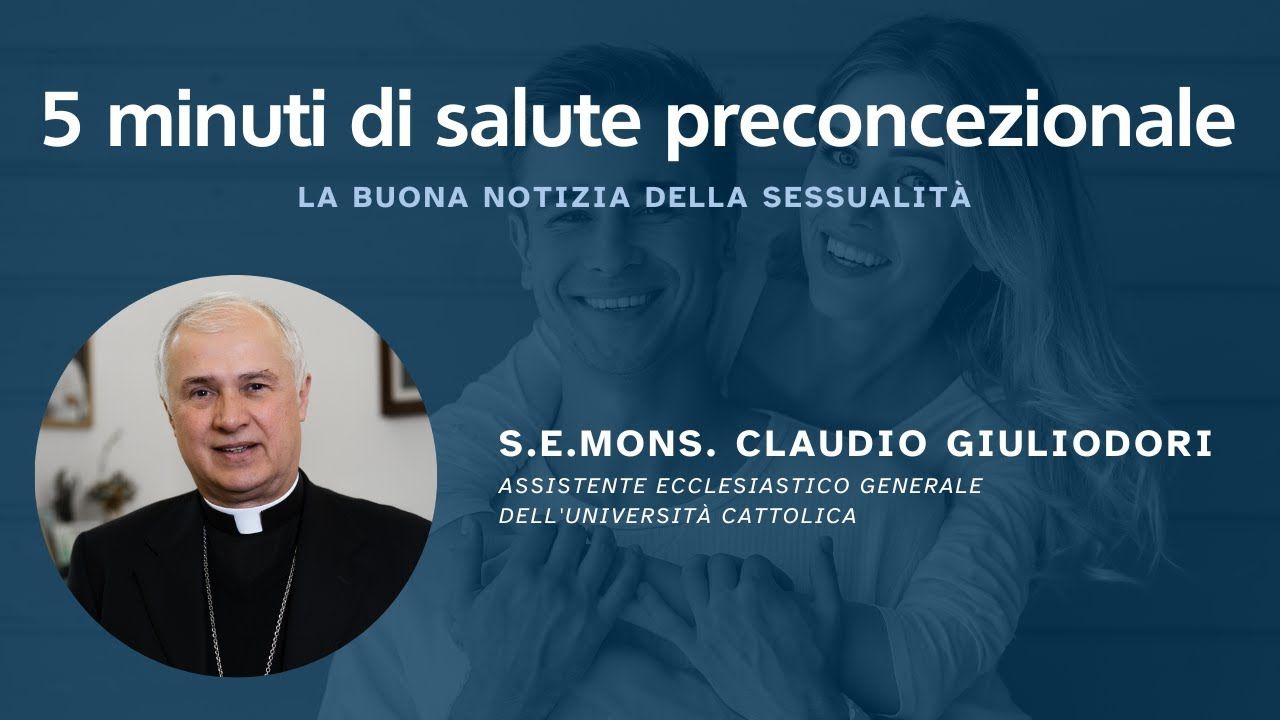The Good News of Sexuality
Good news is the Greek translation of the expression εὐαγγέλιον (euangélion), that is, gospel. In the religious sphere, sexuality is often relegated to the moral sphere and therefore declined in a series of precepts or, even worse, in norms that try to indicate what is sin and what is not.
To really understand what sexuality means, it is necessary to go and see what Christian revelation teaches. Corinth was a pagan city and activities such as prostitution were practiced there. The Christians who lived in that city therefore asked St. Paul how they should live and behave also with regard to the customs and traditions of the couple. To this community of the faithful, St. Paul explained how they should live their affective relationships and their relationship with their bodies.
It can be said - in summary - that, since man has free will, everyone is given the freedom to do what he wants, but there are edifying behaviors and others are not. In this sense, the phrase "Glorify God in your body" is of the greatest importance. It is essential to highlight how St. Paul does not say to be on guard against the body, on the contrary he says to glorify God precisely with the body, even through the sexual act. In fact, the Apostle says: "You are the temple of the Holy Spirit".
The body is that dimension in which the work, the plan of God, is manifested, which is always a path of salvation and redemption. Redemption that is applied in a strong and extraordinary way in our being human. Since "Genesis" there is, in fact, the concept of man and woman as "Imago Dei": the human being was created to represent and express, with his experience, the Love of God. Love in human experience is realized in the communion between man and woman, which then generates attraction.
Benedict XVI, in the encyclical "Deus Caritas Est," says that "eros and agape" must go together. The Ancients, on the other hand, had isolated Eros and had also represented and deified him. Thanks to Jesus, we know that human love is an expression of divine Love. Even in love, however, there is the need to always be attentive and vigilant to the theme of sin. It is no coincidence that Jesus, according to the Gospel of John, begins his preaching precisely from the wedding feast of Cana, performing that beautiful sign that is the creation of the new wine, transmuting that water that needs to be renewed. Jesus has given us the model of this love which is Eucharistic, being a gift that is characterized by a nuptiality that then distinguishes our whole life.
We also find this invitation in the text of the "Apocalypse" with the sentence: "Blessed are those who take part in the marriage of the Lamb". This is the fulfilment of our life, that is, that full and definitive nuptial union with the Lord which in the earthly journey can have a form of sacramental virginity or a sacramental form in marriage. Marriage represents the good news of a love redeemed and fully realized, as St. Paul recalls in chapter 5 of the Letter to the Ephesians. This mystery is truly great, as it relates to the proclamation of Christ and to the Church, but also to human love. It is precisely this proclamation that is the good news that becomes the constitutive element of the Christian outlook on sexuality. The Gospel places a great responsibility on us on this journey that we must follow when we enter the horizon of the good news that Christ came to give us, also with regard to human sexuality.
read more
-
Climate change and birth rateClimate change and fertility; A general topic for a particular problem that is still little studied and little investigated. We are all realizing how much climate change impacts our lives and how necessary it is to stem it, but few have carried out an analysis of the correlation between this phenomenon and the ability to procreate. We talk about it with Prof. Walter Ricciardi.
-
Welfare and birth rateThe Welfare State, developed since the nineteenth century to mitigate social risks such as unemployment and illness, has contributed significantly to the lengthening of the average life expectancy and to the change in the role of women in society. This change has influenced the traditional view of the family and has made it more difficult for women to reconcile work and family, also affecting historical birth rates. Prof. Gilberto Turati explains the current situation and the dynamics underlying it.
-
Andrological preventionWhen we talk about andrological prevention, we are probably entering a field unknown to many. Contrary to what happens for the female counterpart. In fact, the average age of the first gynecological examination is 15 years, unlike what happens in males where the first andrological specialist check-up often comes at a much older age, at the onset of clinical symptoms or when trying to get pregnant. Why is prevention important in the andrological field? This is what Dr. Carmine Bruno explains.
